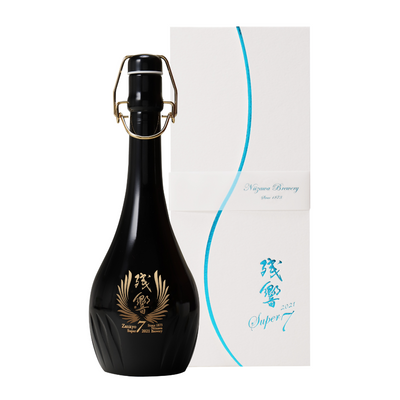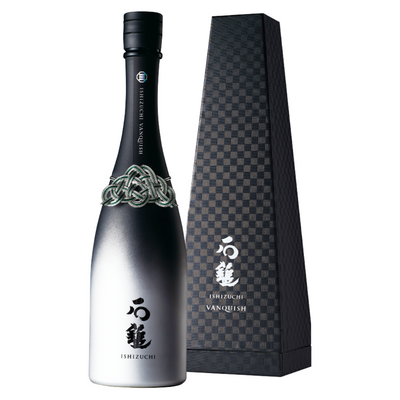The Surprising Uses of Sake’s Byproduct, Sake Kasu
The archetypal Japanese drink, sake, has been enjoyed in various ways for centuries. It is commonly referred to as ‘Nihonshu’ in Japan, and there’s a huge range of unique varieties. Boasting exciting flavor profiles and enjoyed hot or cold, it can be challenging for first-time sake drinkers to know where to begin. But while you’ve probably heard of sake (guessing from the fact that you are on our website), you may not have heard of Sake Kasu, or sake lees, which are the leftover lees separated from the brewing liquid during the filtration process.
A byproduct doesn’t always mean waste, however, and Sake Kasu is anything but. Highly prized and nutritious, Sake Kasu is one of those things that, while easy to use, is generally not adopted by people who didn’t grow up with it, simply because of a lack of knowledge. But its usage is manyfold, from marinades to winter dishes and even beauty products. So let’s dive in and explore Sake Kasu in greater detail.
What is Sake Kasu?
Sake is brewed from a mash that constitutes steamed rice, koji, yeast, and water. During the fermentation process, yeast and koji fungi work together to break down the rice and convert it into alcohol. But not all the rice is broken down and when the fermentation is done, sake needs to be pressed in order to remove the remaining sediments, called lees.
After the main sake brewing season in the winter months, you can buy Sake Kasu from street vendors and various market stalls in the country, as well as some supermarkets, but if you get the chance, undoubtedly the best place to get it is directly from a sake brewery.
Once you’ve gotten your hands on a bit of Sake Kasu you can safely store it in the refrigerator for several months, which makes it an ideal product to experiment with, even if cooking Japanese foods only occasionally.
Sake Kasu as an ingredient in cooking
For cooking, its distinct taste is highly sought after, as is its high nutritional value. Kasuzuke, for example, is commonly used to pickle and marinade everything from fish and chicken to a variety of vegetables. Kasuzuke vegetables are incredibly easy to prepare (find our recipe here) and a great companion for sake, and Kasuzuke fish is readily available in Japanese supermarkets (insert picture because I’m sure many foreigners have seen this before and have no idea what it is). Kasujiru on the other hand is a wonderful winter soup that contains vegetables, fish, and miso, amongst other ingredients - find our recipe here].

For home bakers, Sake Kasu is a popular addition to various cakes, ice creams, and bread. If you bake your own bread or make your own pizza, try swapping out a part of the flower for Sake Kasu (or see our recipe for Sake Kasu pizza here). It can also be used to make other drinks such as amazake [a sweet and creamy drink enjoyed in certain parts of Japan].
Sake Kasu as an ingredient in Japanese beauty products
Sake Kasu is high in vitamin B, which helps to regenerate your skin and has many anti-aging properties. Apparently, the health benefits of sake lees were initially discovered when an old brewer was found to have baby-soft, wrinkle-free hands, in stark contrast to his wrinkled face. From here, researchers and scientists began to explore the many beneficial properties of Sake Kasu and realized it could be an ideal ingredient in many cosmetic products.
As well as skin regeneration, Sake Kasu is said to reduce blemishes, makes for tighter and lighter skin, and helps to soothe inflammations and skin conditions such as eczema and acne. People who make Sake Kasu-based beauty products at home will usually combine it with rice water, thanks to the latter’s nourishing antioxidant ferulic acid. This organic compound significantly soothes and heals the skin when paired with Sake Kasu. But other natural ingredients can be added to the Sake Kasu as well, such as aloe vera and honey.
Common beauty products made with Sake Kasu range from homemade to professionally-produced, and include a range of lotions, soaps, and anti-aging creams that provide a chemical-free alternative to mass-produced cosmetic products.
One of the easiest and most impactful ways of using sake lees at home is by preparing a simple face mask. A combination of Sake Kasu, organic rice, rose, or coconut water, and a dash of freshly squeezed lemon or honey can make an incredibly soothing face mask, that is full of organic compounds and free from chemicals. You can find out more about preparing a homemade Sake Kasu face mask here.
As for Sake Kasu soap, it is a little more complex to make from home, but it’s more than possible if you find an appropriate recipe. Sake lees soaps prevent your skin from drying out and ensure it retains enough moisture after scrubbing. Many exquisite Sake Kasu soaps are available to purchase online, with various scents and component ingredients. You can find out more about Sake Kasu soaps here.
Sake Kasu Recipe Ideas
As we’ve mentioned, Sake Kasu is a sought-after ingredient in Japanese kitchens, thanks to its unique taste and nutrient-rich properties. It’s also easy to use and so a great step into discovering more about the lesser-known areas of Japanese cuisine. Here we have collected a few recipes to highlight the way Sake Kasu can be used:
Tender Marinated Chicken: This melt-in-your-mouth sake lees tender marinated chicken recipe is super easy to follow, meaning it’s suitable for home chefs of varying capabilities.
Salmon Kasuzuke (recipe): You’re probably seen Kasuzuke marinated fish all over Japanese supermarkets (and might not have known what they were), but why not make it yourself? Super easy to prepare and full of organic acids and minerals, it’s the perfect recipe to bring an exotic flavor to a well-known ingredient.
Sake Kasu bread: If you want to get a bit more creative in the kitchen, why not try this Sake Kasu bread recipe? The end result is a number of extremely fluffy and light bread rolls that taste slightly cheesy.
Sake Kasu Pizza: This is a great accompaniment to drinking sake.
Kasujiru: A delicious and warming winter soup.
Sake Kasu pickled vegetables: Again, great as an accompaniment for sake but also as a side dish for a main Japanese meal.
Closing thoughts
If you’re trying to explore Japanese cooking or branch out with slightly more experiential ingredients, Sake Kasu is a great choice. The fact that you can create familiar dishes that incorporate this ingredient makes it both fun and accessible.
Being nutritious and having a long shelf life also doesn’t hurt. Your author is well acquainted with the pain of buying infrequently used ingredients only to have them go bad in the back of the fridge.





Leave a comment